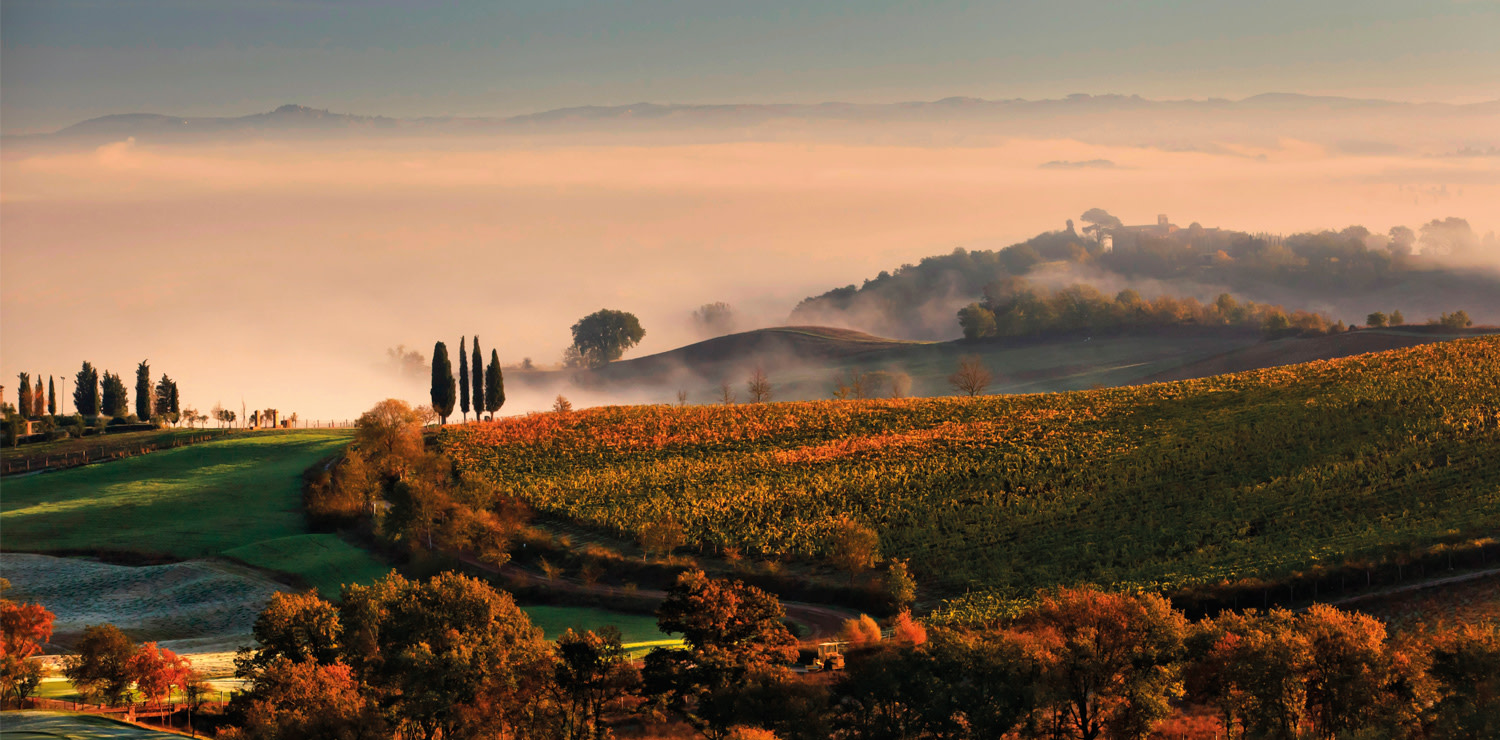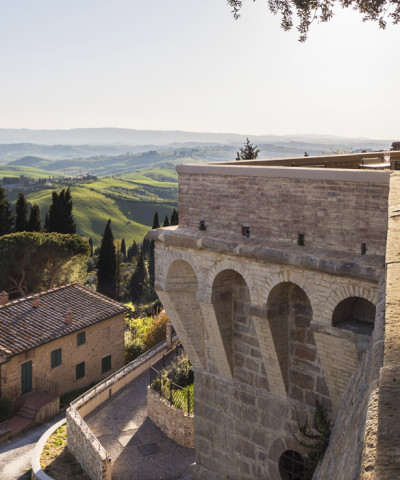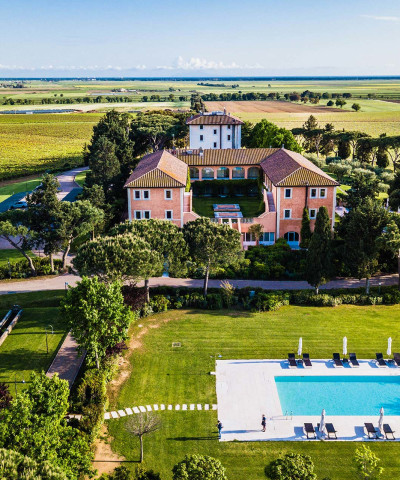Chianti and Chianti Classico: what's the difference?
A journey through two great wine territories straddling Florence and Siena, to learn about the differences due mainly to the wine tradition
Chianti and Chianti Classico
When it comes to wine made in the provinces of Florence and northern Siena, tradition takes precedence over political geography. The reason lies in one word: Chianti, that most fortunate patch of Tuscany nestled between Siena and Florence. In the 1700s, Grand Duke Cosimo III defined the boundaries of the area still known today as Chianti Classico, some 700 square kilometres spread out over the provinces of Florence and Siena, including the interior territories of the four municipalities Castellina, Gaiole, Radda and Greve, and portions of an additional five: Castelnuovo Berardenga, Poggibonsi, Barberino Val d’Elsa, and, in the Val di Pesa, Tavarnelle and San Casciano. Yet not to be overlooked are all the other denominations of Chianti produced in areas extending well beyond the Chianti Classico region and offering quality wines. Outside the traditional Classico area, production of an additional 8 denominations of Chianti (such as Colli Fiorentini and Chianti Rufina, the two most important), extend the boundaries of the Chianti territory even farther.
These are also the lands where, at the end of the 1800s, modern Italian viticulture started with Florentine Vittorio degli Albizzi—who brought the principles of cultivation learned while studying vineyards in France back to his estate in Pomino—as well as Bettino Ricasoli at the Brolio Castle, who was to become the leading exponent of a new vision of wine-making (during the same period in which Clemente Biondi-Santi was cultivating the ancestor of Brunello di Montalcino). Moreover, it is here that the Tuscan production process came about in the 1960s, again on the heels of French methods, coming to define the distinction between quality and quantity, with Piero Antinori and his revolutionary Tignanello.
CHIANTI CLASSICO
RADDA, GAIOLE AND CASTELLINA IN CHIANTI (Sienese Chianti Classico)
The pearls of this zone are Radda, Gaiole and Castellina, the area capital to all effects given its former position as centre of the Chianti League. We are in the highest mountains of the Chianti, where the altitude, temperature range (falling below 4-5 degrees Celsius in winter, and dry and hot in summer), and land comprised primarily of the noted Chianti boulder rock and sandstone, all render these wines notably pure and fresh, with an elevated yet very fragrant acidity, at a good quality-to-cost ratio.
Here in this part of Tuscany, the land has remained unspoilt, perhaps because it is also the most arduous. Among the historical wineries, a few pillars of Italian wine-making must be mentioned, such as Castello di Brolio in Gaiole in Chianti, an estate dating to the high-medieval period, Castello di Ama and San Giusto a Rentennano, also in Gaiole, and Montevertine in Radda in Chianti. Not far from Castellina, in Fonterutoli, is the enchanting Mazzei estate, dating to the 1400s and today a winery still operating under the Mazzei name to produce wines considered the jewels of Italian wine-making—in terms of tradition, knowledge, quality and capacity to evolve—and which are highly appreciated by wine experts. In these lands dedicated to Sangiovese, a number of wineries have for some years been conducting extensive studies, with amazing results: it is not surprising, then, that in this high, cool, calcareous land around the Sienese Chianti and Florentine Chianti, some of the best quality Pinots, Merlots, and Cabernet Sauvignons are produced. Here the French varietals lose their herbaceous characteristics and take on those of the Tuscany—they are said, in fact, to turn Tuscan—becoming better-structured wines, powerful yet highly fragrant.
Such is the case with Podere Monastero in Castellina in Chianti, where Alessandro Cellai (who is also the director of Castellare di Castellina) makes an excellent 100% Pinot Nero, La Pineta, similar to a Burgundy. Another great Pinot Nero is produced by Colle Bereto in Radda, while two top 100% Merlots are found in L’Apparita from Castello di Ama, and La Ricolma from San Giusto a Rentennano.
SAN CASCIANO AND GREVE (Florentine Chianti Classico)
In this region, Sangiovese is characterised by a distinct elegance with fruity aromas. The historical wine-making leader here is Antinori, a name in wine with no need for introductions—recently their innovative cellar in Bargino (San Casciano Val di Pesa) has drawn world-wide attention—who has chosen to preserve tradition with Chianti Classico and Chianti Classico Reserve, while also creating absolute masterpieces through combinations of Cabernet Sauvignon and Sangiovese, Tignanello and Solaia, under the vision of Piero Antinori. In San Casciano, additional wines are produced at the Le Corti dei Principi Corsini farm, at Castello di Gabbiano, at Castello di Vicchiomaggio (makers of FSM, one of the best 100% Merlots in Italy), Villa Calcinaia dei Conti Capponi in Greve and, naturally, at Castello da Verrazzano. On the slopes of San Casciano, these instead part of the Florentine Chianti hills region, Castelvecchio wines must be noted. In Greve, Lamole di Lamole (Santa Margherita Winery, Marzotto Group) is a small Tuscan jewel whose vineyards reach the highest peaks of the Sangiovese lands, and where a local biotype named Lamole has been created.
PANZANO (Florentine Chianti Classico)
A few kilometres from Greve is Panzano, the area known as “la Conca d’Oro” or “Golden Bowl” with a history all its own. This is dividing line between the northern Chianti Classico region and the southern, where Sangiovese reaches one of the highest peaks of the Chianti Classico, in a harmony of colour and potent flavour and aroma. Extending over the Conca d’Oro are the vineyards of Fontodi and its legendary Flaccianello, such as those of the La Massa Farm, Castello dei Rampolla, Montefili, Villa Cafaggio, and Molino di Grace. Panzano is an exceptional case in the wine world, since it is here that a belief in organic production took root and spread like wildfire; and in the wake of this experimental pull between the distant past and the near future, among the most interesting phenomena happening currently are some wineries experimenting with amphora fermentation, an ancient wine-making technique using ceramic urns, sure to catch on.
BARBERINO VAL D’ELSA (Florentine Chianti Classico)
In the Barberino Val d’Elsa area, the great interpreters of true Chianti Classico are Isole and Olena, where Paolo De Marchi, a winemaker of fine intellect, produces excellent Sangiovese such as Cepparello, and Castello di Monsanto with a “base” Chianti Classico and two Reserves (Castello di Monsanto and Il Poggio). While Vincenzo D’Isanto of the I Balzini winery, in order to best work the lands ill-suited to Chianti, decided to use Cabernet together with Sangiovese. A modernist and internationalist, he remains nonetheless connected to a rock-solid wine tradition: in fact, he created his business alongside oenologist Giulio Gambelli, one of the top experts of Sangiovese in the Chianti Classico.
CHIANTI
VAL DI SIENA, RUFINA, POMINO (Chianti Rufina)
Chianti Rufina is a small production area, one of the highest, which winds through three valleys: the central Sieve valley, and the two lateral valleys of the River Arno, Molin del Piano and the Pelago slope overlooking the Arno. Here the less stable environment nonetheless results in a Sangiovese of notable freshness, acidity, and extreme longevity, wines in which traits of fresh elegance win out over strong tannins—a quality that has given a new face to Chianti Rufina, for decades relegated in the popular imagination to the status of a flask wine. The two historic wineries in Chianti Rufina are Selvapiana and, naturally, Frescobaldi, producers of excellent Reserves such as Nipozzano, Mormoreto, Montesodi from the very beginning—the point of reference in this region. Other producers currently emerging are Castello del Trebbio, Villa Bossi of the Marchesi Gondi, I Veroni in Pontassieve, as well as smaller wineries like Il Pozzo (also in Pontassieve) and Travignoli, located on the slopes of Pelago.
VINCI, FUCECCHIO, MONTESPERTOLI, EMPOLI, SCANDICCI, IMPRUNETA, BAGNO A RIPOLI (Florentine Chianti Colli)
This, on the other hand, is a vast and highly diverse zone that extends throughout the entire hilly area to the east and south of Florence. Starting with the most westward slope are the territories of Vinci, where the Sangiovese is mellower. Production of remarkable wines began here thanks to the experience of wineries such as Castello di Poppiano dei Guicciardini and Poggio Capponi in Montespertoli, Fattoria di Montellori in Fucecchio, and, of course, the important Cantine Leonardo da Vinci, a giant in local production. In the area around Scandicci, smaller enterprises such as the biodynamic production of Roberto Moretti merit mention. Towards Bagno a Ripoli, on the opposite bank of the Val di Sieve, niche producer Fattoria di Petreto makes noble rot wines Semillon and Sauvignon, and Pourriture Noble, recalling the French Sauternes. Other wine makers worth mentioning in this area are La Fattoria Le Sorgenti, producing more IGT than DOC wines, and La Fattoria di Lilliano, whose wines tend to be mellow and structured. In Impruneta, the Fattoria di Bagnolo and the Azienda Agricola Lanciola.











